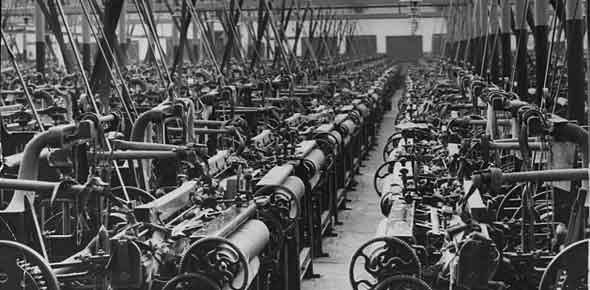Factory Evolution: Igniting the Industrial Revolution
Origins of the Factory Industrial Revolution
The Factory Industrial Revolution emerged in the late 18th century and extended into the 19th century. It was characterized by the shift from agrarian, labor-intensive economies to mechanized, factory-based production systems. This era witnessed a rapid transition from manual labor to machinery-driven manufacturing, ushering in a wave of technological innovations that revolutionized various industries.
Key Innovations that Transformed Factories
- Textile Machinery: The cotton industry was a significant catalyst for the Factory Industrial Revolution. Innovations like the spinning jenny, water frame, and power loom mechanized the process of spinning and weaving, enabling mass production of textiles.
- Steam Power: The invention of the steam engine by James Watt revolutionized power generation. It allowed factories to be situated in urban areas instead of relying on water sources, leading to the concentration of industries in cities.
- Iron and Steel Production: Improvements in iron and steel manufacturing techniques led to the construction of stronger and more efficient machinery, facilitating the growth of factories.
- Interchangeable Parts: Eli Whitney’s concept of interchangeable parts paved the way for standardized production, making maintenance and repair of machinery more efficient.
- Mass Production Techniques: The implementation of assembly line techniques in various industries, most notably in automobile manufacturing, further increased productivity and reduced costs.
Social Consequences and Transformations
The Factory Industrial Revolution brought about profound changes in society:
- Urbanization: The shift towards factory-based production led to mass migration from rural areas to cities in search of employment, resulting in rapid urbanization.
- Labor Conditions: Factory work often involved long hours, low wages, and hazardous conditions. Labor movements and unions emerged in response to these challenges, advocating for better rights and working conditions.
- Social Classes: The divide between the bourgeoisie (owners of the means of production) and the proletariat (working class) deepened, leading to societal stratification and eventually contributing to the growth of socialist and communist ideologies.
- Technological Advancements: The demand for improved machinery and systems drove technological innovation, spurring the growth of engineering and scientific knowledge.
Legacy of the Factory Industrial Revolution
The Factory Industrial Revolution laid the foundation for the modern world:
- Economic Transformation: The mass production and efficient manufacturing techniques introduced during this era laid the groundwork for the consumer-driven economies of today.
- Technological Innovation: The innovations developed during this period continue to influence modern manufacturing processes and technological advancements.
- Social Movements: The challenges faced by workers during this era led to the establishment of labor rights, workplace regulations, and the growth of organized labor movements.
- Urban Infrastructure: The massive influx of people into urban areas during this time spurred the development of urban infrastructure and services.
